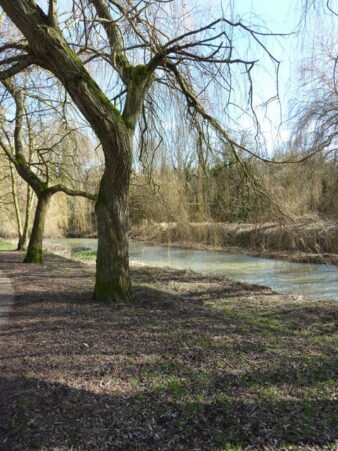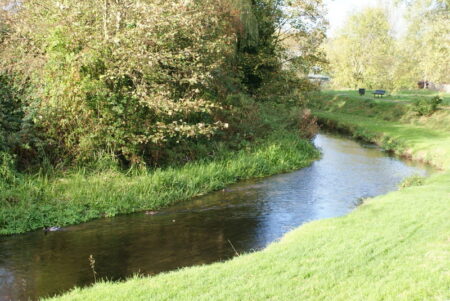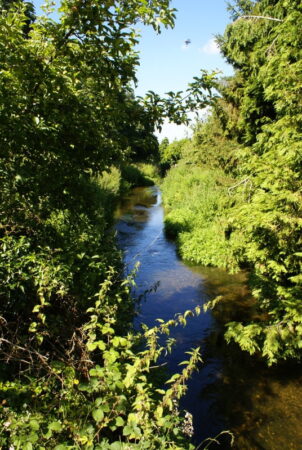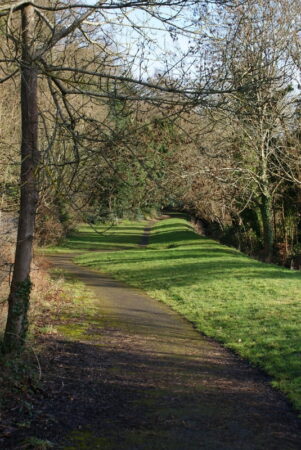
The river system
The river Wey and its tributary streams contribute to the scenic attraction of Farnham and also support wildlife but they also bring a risk of flooding which must be managed.
The River Wey
Farnham stands at a bridging point of the River Wey which runs through the centre of the town. This is in fact the northern branch of the Wey which rises near Alton and meets the southern branch at Tilford. The combined flow goes on through Guildford until eventually meeting the Thames at Weybridge. The complete system also includes a number of tributary streams including in Farnham the Nadder Stream flowing through Farnham Park, and The Bourne and Frensham Vale Streams running through South Farnham. Historically this part of the Wey river system was important for the supply of water for the town’s people and its industries. Today the waterways remain an asset to the town, greatly adding to its scenic attraction and supporting a rich variety of wildlife. As with all river systems, however, there is a risk of flooding, mainly at times of heavy rainfall.
The management of flood risk
Left to its own devices the Wey, like all rivers, would largely regulate its own flow by over-topping its banks into adjacent low-lying land often designated as flood or water meadows. This natural process can still be seen in operation in Farnham when the Bishop’s Meadows and other fields alongside the A 31 Alton road are regularly under water. This water is effectively held in a temporary reservoir, thus reducing the flood risk through the town centre. However, this process is not sufficient on its own to protect the built up area and so other measures need to be taken.
The management of flood risk from these rivers and the other drainage systems in the town falls to a number of statutory Authorities but land owners whose properties adjoin the watercourses and some other householders also have an important part to play. For details go to Managing flood risk. Those at risk of flooding need to take a methodical approach to protecting themselves and their property. For details go to What to do before, during and after a flood.
The rivers also provide important corridors for wildlife through the increasingly built up areas of the town. Conservation of the wildlife associated with the watercourses falls principally to the Environment Agency but other agencies including the Surrey Wildlife Trust and local volunteer groups also have key roles to play. For details go to water quality and wildlife conservation where the important subject of water quality is also discussed.


